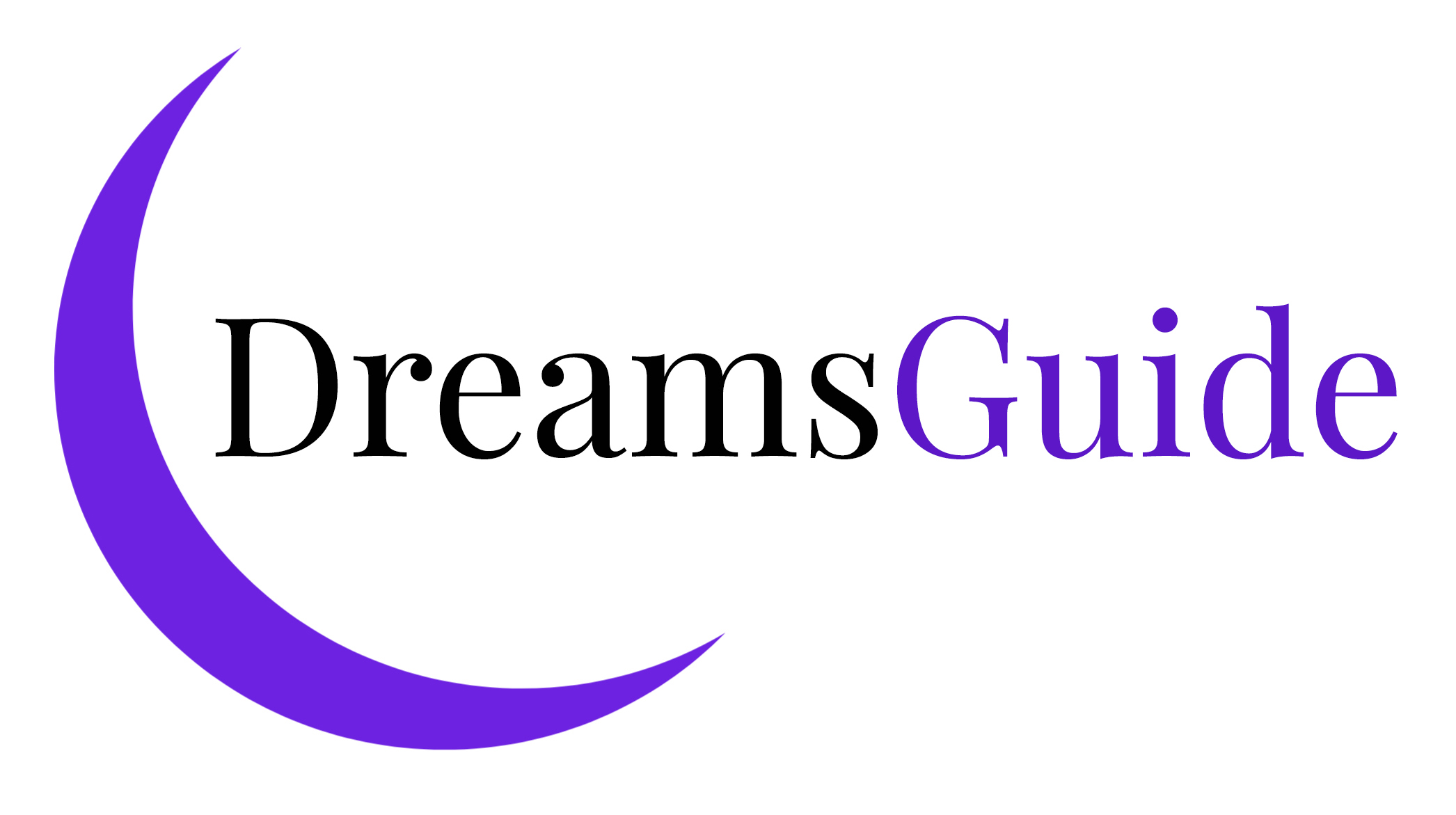Shadow figures are mysterious and unsettling presences that often appear in our dreams, leaving many of us wondering about their meaning and symbolism.
Dreams have been a subject of fascination and study for centuries, with various theories suggesting that they can potentially provide insight into our subconscious minds, desires, and inner workings. Within this realm of wonder and exploration, the appearance of shadow figures is of particular interest due to their enigmatic nature and the emotions they tend to evoke.

In order to delve into the underlying symbolism of shadow figures in dreams, we must first understand what they represent and what kind of message they might be trying to convey.
Shadow figures, also known as shadow beings or shadow people, are perceived as dark, silhouette-like entities that lack discernible features and seem to exist on the periphery of our awareness. Often associated with feelings of fear or unease, these elusive figures are thought to symbolize various aspects of our psyche, repressed emotions, or unresolved issues.
As we explore the symbolism behind shadow figures in dreams, it is important to consider the context in which they appear and the emotions they elicit. Analyzing these elements can provide valuable clues and insights into the messages our subconscious may be trying to communicate.
Whether viewed as messengers from our inner selves or as manifestations of universal archetypes, shadow figures challenge us to confront the hidden aspects of our psyche and encourage deeper self-understanding.
Understanding shadow figures in dreams
Different types
Shadow figures often appear in dreams, and they can represent various aspects of our lives. There are several types of shadow figures, each with their own unique characteristics. These may include ghost-like figures, animal shadow figures, and shape-shifting shadows.
Understanding the different types of shadow figures might help us better interpret their meaning in our dreams.
Characteristics of shadow people
Shadow people are generally characterized by a few common traits. They often appear as dark, silhouetted figures and might lack discernible features. Some may be seen as tall and menacing, while others can be small and neutral.
Their actions can vary greatly; some may simply observe the dreamer, while others might interact in various ways. It’s essential to recognize these characteristics to better understand the intentions of shadow people in dreams.
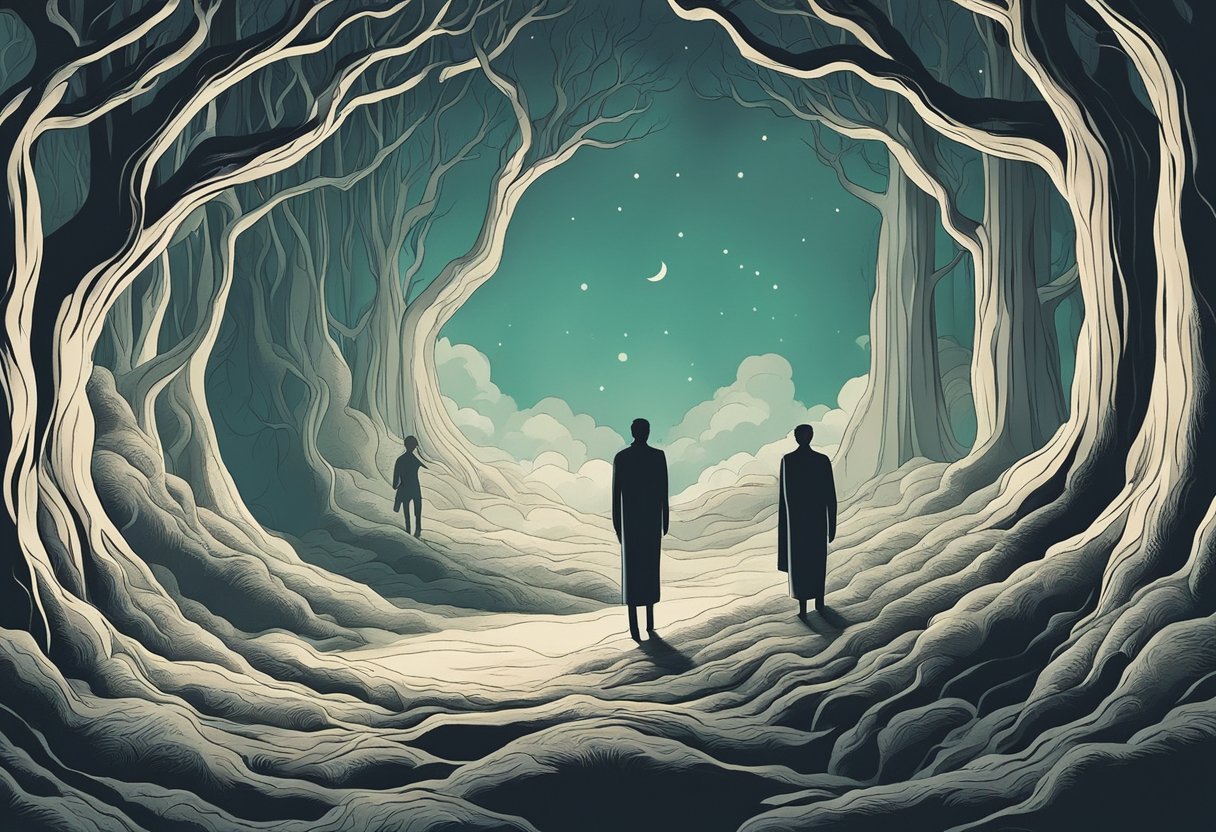
Interacting with shadow people
Interacting with shadow people in dreams can evoke a range of emotions and reactions. Some dreamers may feel fear or curiosity when encountering these figures, while others may experience a sense of protection or guidance. There are some methods that can help with interacting with shadow people in dreams, such as trying lucid dreaming techniques or asking questions to the figure.
In summary, shadow figures in dreams can symbolize a variety of concepts and emotions. Recognizing the different types, characteristics, and ways of interacting with these figures can provide valuable insight into our inner selves and personal growth.
Related: What Does it Mean to Dream of Being Lost in a Building? Decoding the Symbolism
Interpretation of shadow figures
Symbolic meaning
Shadow figures in dreams often represent the unknown or hidden aspects of the dreamer’s psyche. These shadows may symbolize repressed emotions, hidden fears, or even unresolved conflicts.
In dream analysis, shadow figures can be a prompt for the dreamer to confront these hidden aspects and integrate them into their conscious understanding. It is not uncommon for dreamers to feel a sense of fear or unease when encountering shadow figures, yet facing these entities can lead to personal growth and self-awareness.
Hidden meaning
The hidden meaning of shadow figures is often a reflection of the dreamer’s unresolved issues and the need for self-discovery. As these figures emerge from the depths of the subconscious mind, they potentially carry messages from the dreamer’s inner self.
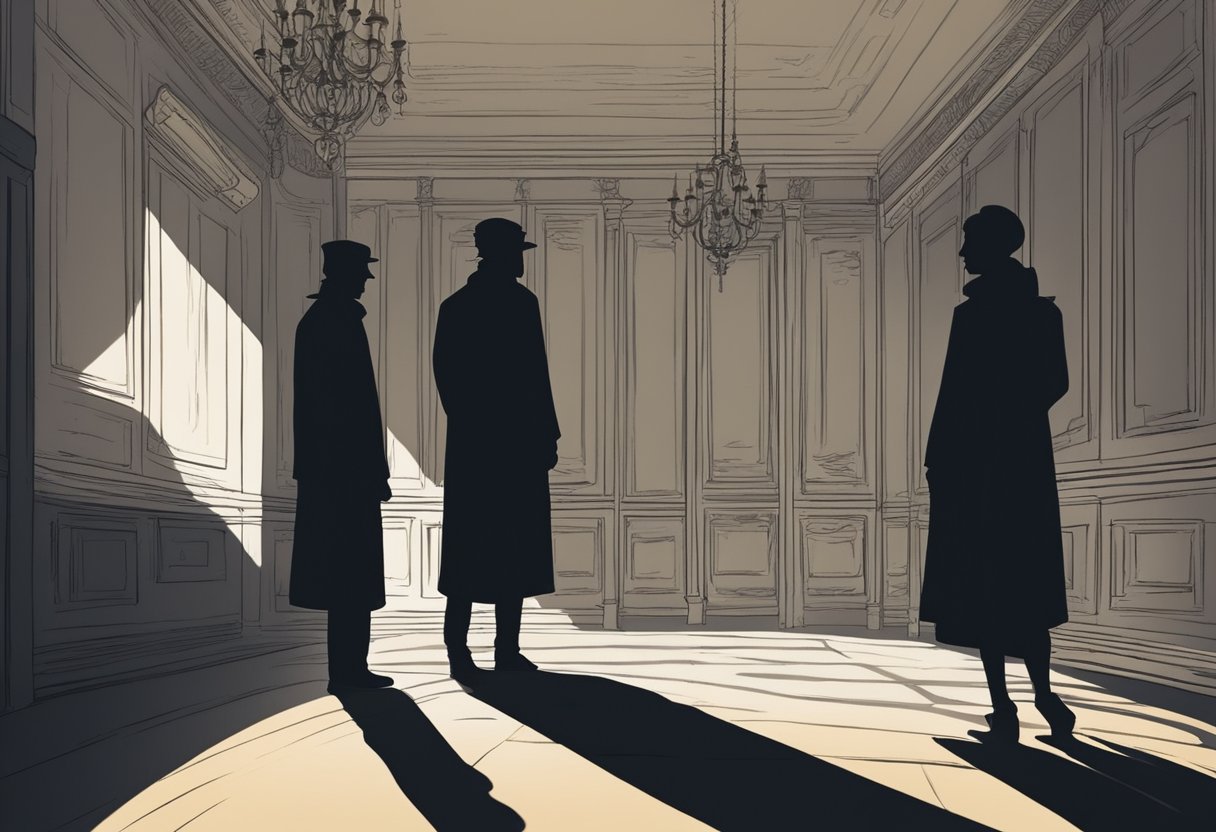
In many cases, dream analysis suggests that the appearance of shadow figures indicates a desire for change or transformation. Delving deeper into the dream context may provide the dreamer with insights and practical advice for tackling their challenges head-on.
Cultural context
Different cultural beliefs can also play a significant role in the interpretation of shadow figures in dreams. In some traditions, shadow figures might be considered omens or spiritual entities, while in others, they are seen as messengers or guardians. For instance, in Jungian dream analysis, these figures might represent the “shadow self” – an aspect of the individual’s personality that they are not aware of or refuse to acknowledge.
In conclusion, the symbolism of shadow figures in dreams varies depending on the dreamer’s cultural context and personal experiences. A comprehensive dream interpretation must consider both the symbolic meaning and hidden meanings behind these entities to provide a nuanced analysis. Ultimately, understanding shadow figures can offer the dreamer a deeper insight into their psyche and facilitate emotional growth.
Related: What Does it Mean to Dream About Running? Decoding Your Sleep Adventures
Psychological perspective
Carl jung’s theory
Carl Jung, a renowned Swiss psychiatrist, offered a view on the meaning of shadow figures in dreams. He believed that these figures represent our “shadow self” – the unconscious aspect of our personality that our conscious mind represses.
The shadow self consists of hidden desires, fears, and emotions that we may not be aware of or unwilling to face. In this context, encountering shadow figures in dreams symbolizes the need for self-awareness and exploration of our subconscious/unconscious realms.
Repressed emotions
Another possible interpretation of shadow figures in dreams is that they represent repressed emotions. These emotions can range from anger, anxiety, guilt, to even seemingly positive feelings like love or joy.
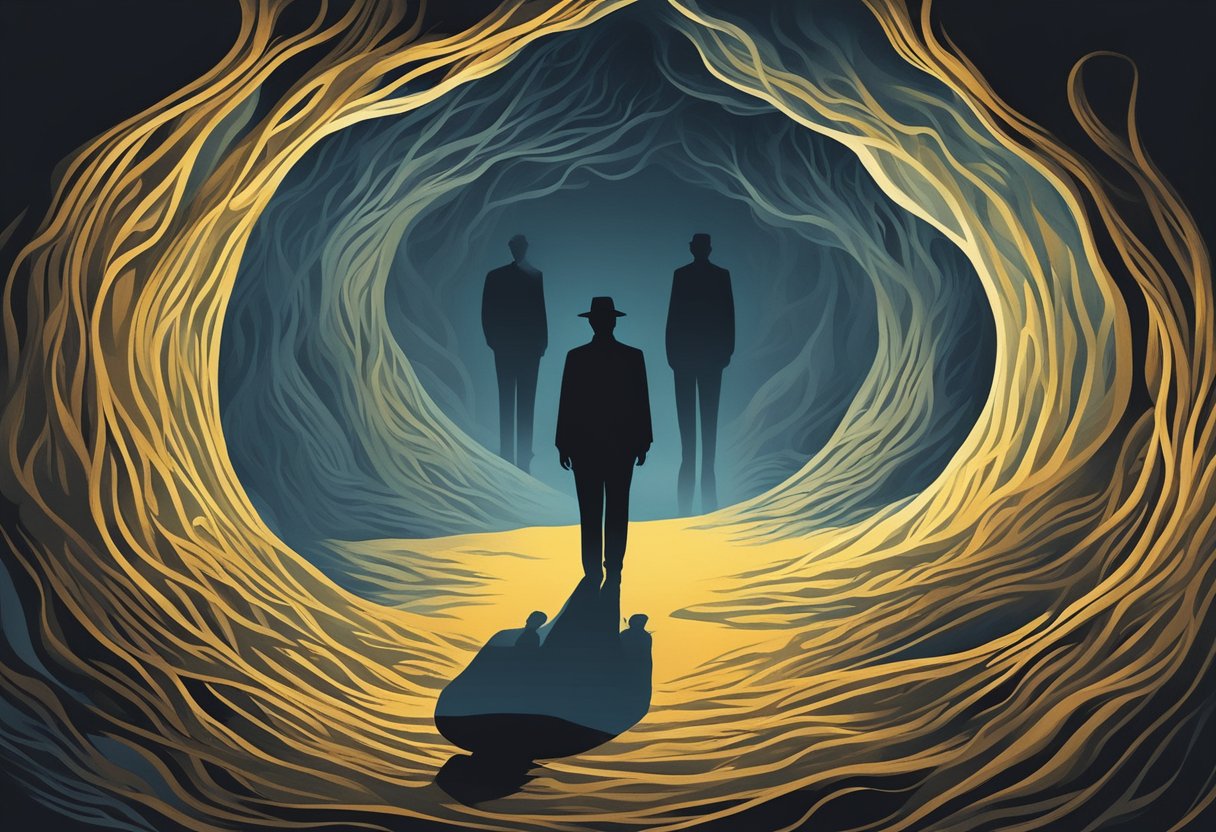
When we experience events or situations that trigger strong emotions, our subconscious mind may try to hide these feelings to protect us from pain. However, these repressed emotions can manifest as shadow figures in our dreams, urging us to acknowledge and confront these hidden emotional states.
Unresolved trauma
Unresolved trauma can also be a source of shadow figures in dreams. When we experience traumatic events, our brain may store these painful memories in our subconscious mind to shield us from the effects of the trauma.
But suppressing these memories doesn’t make them disappear – they can still influence our thoughts, behaviors, and dreams. Shadow figures, in this case, can symbolize our unresolved trauma, indicating a need to address and heal from the experiences that continue to haunt us.
Common themes associated
Being chased
In dreams, one common theme associated with shadow figures is the feeling of being chased. This can represent a person’s fear of facing problems, running away from responsibilities, or avoiding confrontation.
During these dreams, the shadow figure may represent the person’s fears or negative emotions that are trying to catch up to them. As they try to escape, the dreamer may feel a sense of powerlessness, making it difficult to face and conquer their fears.
Fear of the unknown
Another significant theme connected to shadow figures in dreams is the fear of the unknown. Shadow figures often embody a sense of mystery, appearing uncertain and ambiguous.
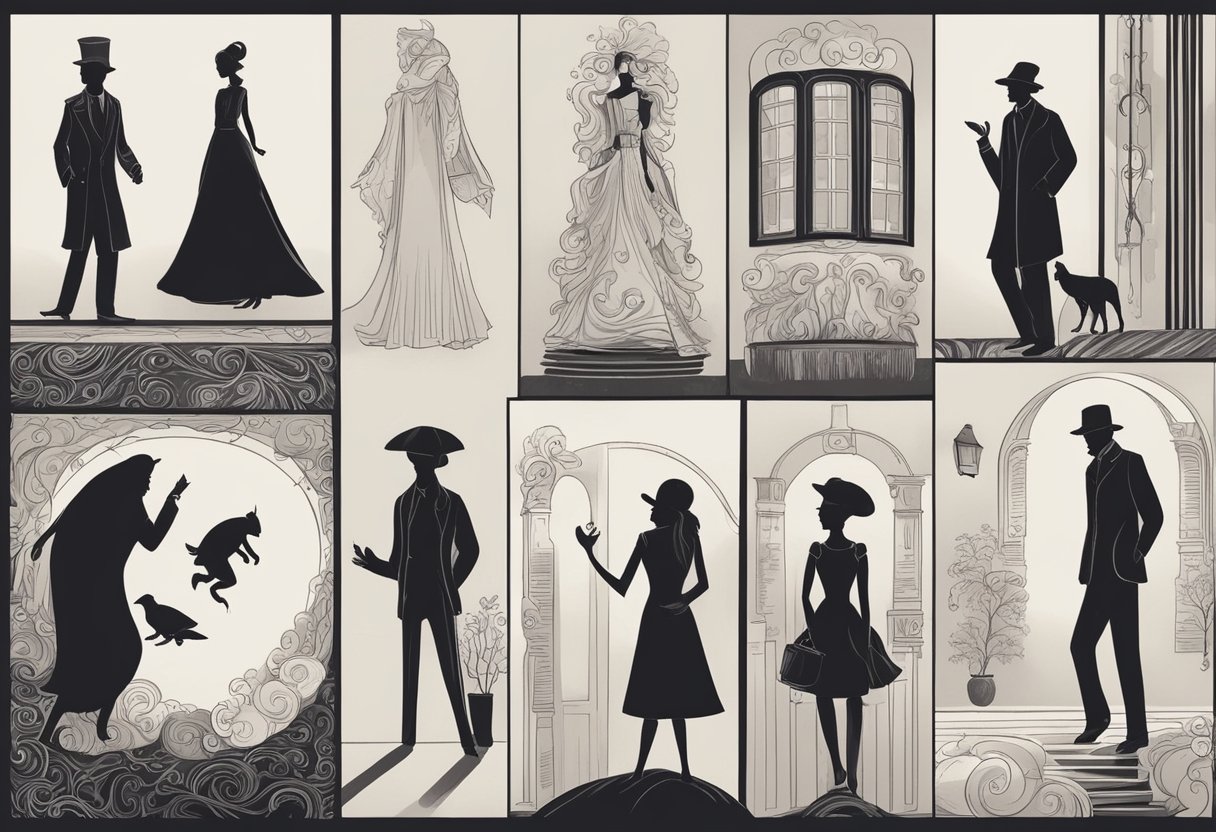
This inability to clearly identify the figure can symbolize an individual’s anxiety or apprehension about the unknown aspects of their life. It might be a representation of their worry about unforeseen challenges, changes, or the uncertainty of the future.
Powerlessness
A feeling of powerlessness is a common emotion experienced in dreams involving shadow figures. The presence of these figures may evoke a sense of helplessness, making it difficult for the individual to assert control over their own life.
This might be a reflection of situations in their waking life where they feel trapped, unable to make changes or find a solution to their problems. The shadow figure can represent the obstacles and limitations that the person is struggling to overcome.
Related: What Does It Mean to Dream About Pregnancy: Unveiling the Symbolism
Shadow figures and emotional state
Anxiety
Shadow figures in dreams can symbolize anxiety, often taking on the appearance of a looming, dark presence. These shadowy forms may represent the individual’s anxieties projected onto their dream world.
Shadow figures can also amplify feelings of insecurity and concern, causing the dreamer to feel overwhelmed by the unknown. For those experiencing heightened anxiety in their waking life, encountering shadow figures in dreams may be a reflection of this emotional state.
Depression
Depression is another emotional state commonly associated with shadow figures in dreams. The ominous, oppressive nature of these dark silhouettes may signify feelings of sadness, hopelessness, and isolation that the dreamer is experiencing.
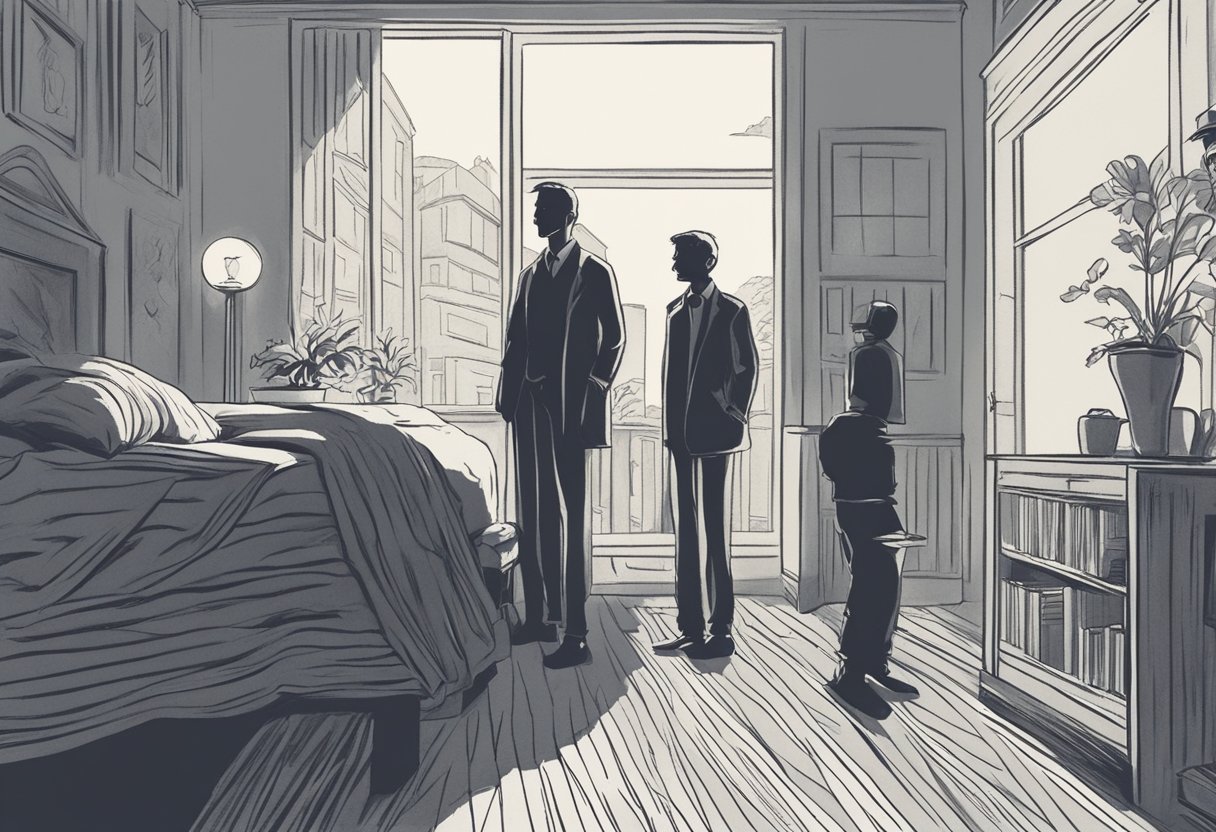
The presence of shadow figures can also suggest a struggle to confront or overcome negative emotions, resulting in a sense of being trapped or confined within one’s own mind.
Shame
The appearance of shadow figures in dreams can also represent feelings of shame or guilt. These enigmatic apparitions might embody the individual’s inner judgment, symbolizing a critical and punishing part of themselves.
As people who experience shame tend to feel unworthy, judged, and exposed, encounters with shadow figures in dreams may serve as a projection of these emotions. The darkness associated with shadow figures is often interpreted as a reflection of one’s perceived inadequacies and hidden flaws.
Helplessness
Helplessness is another emotional state frequently connected with shadow figures in dreams. These mysterious entities can symbolize a lack of control or power, resulting in a sense of vulnerability and defencelessness.
When faced with a shadow figure, the dreamer may feel unable to escape or confront the figure, mirroring their own internal struggles with feelings of helplessness. This feeling of powerlessness can impact an individual’s mental health and contribute to their overall emotional well-being.
The role of dream journals
Keeping a dream journal
Keeping a dream journal can assist individuals in gaining a deeper understanding of the symbolism in their dreams, including the presence of shadow figures. By consistently recording their dreams upon waking, they can track patterns and recurring themes. This practice allows them to better analyze and interpret the meaning of shadow figures in their dreams.
A well-organized dream journal can include the date, a title for the dream, a detailed description of the dream, and any emotions or feelings experienced during the dream. It can be helpful to keep the journal beside one’s bed to ensure easy access upon waking.
Dream journaling
Dream journaling is the practice of writing down one’s dreams immediately after waking. This process allows individuals to reflect on their subconscious thoughts and analyze any symbols present in their dreams, such as shadow figures. The act of recording these dreams also helps individuals remember them in greater detail, which is essential to understanding their meanings.

To make the dream journaling process more effective, individuals can adopt certain practices:
- Keep the journal and a pen or pencil within easy reach of the bed.
- Write down dreams as soon as possible after waking since dreams fade away quickly.
- Be as detailed as possible, including specific descriptions of the shadow figures, if present.
- Reflect on any feelings, emotions, or sensations that occurred during the dream.
- Review the journal on a regular basis to recognize patterns and recurring themes.
Engaging in dream journaling can lead to valuable insights into one’s subconscious and aid in interpreting the meaning of shadow figures in dreams. It allows individuals to unravel the hidden messages held within their minds, which could ultimately lead to personal growth and self-discovery.
Therapy and counseling
When experiencing shadow figures in dreams, seeking therapy or counseling might be a valuable step in understanding and addressing their meaning. Psychotherapy can be particularly useful, as it explores unconscious thoughts and feelings, allowing individuals to better comprehend their dreams.
Therapists can use various techniques to delve into dream analysis, including guided imagery, association, and amplification. These approaches facilitate individuals’ ability to uncover the potential emotional or psychological factors driving these mysterious shadows in their dreams. Additionally, therapy can help individuals develop strategies to reduce anxiety or other distressing emotions associated with these figures.

Counseling offers another avenue for addressing shadow figure dreams. A trained counselor can listen and provide support without judgment, assisting individuals in examining their thoughts and feelings surrounding their dreams. This empathetic environment can aid in self-discovery and promote wellness, paving the way for potential solutions in dealing with troubling or repetitive shadow figure dreams.
In conclusion, when struggling with shadow figures in dreams, pursuing professional assistance through therapy or counseling might be a valuable resource. These approaches can provide insight and encourage self-awareness, ultimately aiding individuals in understanding their dreams and managing any related emotional distress.
Lucid dreaming and shadow figures
In the realm of lucid dreaming, shadow figures often represent a lack of control or an inability to fully manipulate the dream environment. It is widely believed that these mysterious figures symbolize the dreamer’s inner fears, anxieties or repressed emotions. While experiencing a dream, individuals may encounter shadow figures as an obstacle to achieving control over the dream environment.
Lucid dreaming is a state in which the dreamer is aware that they are dreaming and may exercise a degree of control over the dream world. However, controlling dreams can be a complex task, especially when faced with shadow figures.
These enigmatic beings may hinder the dreamer’s ability to fully immerse themselves in the dream, representing a barrier that must be overcome.
In some cases, shadow figures within lucid dreams might serve as a challenge or test for the dreamer. In order to regain control, the dreamer must confront their own insecurities or unresolved emotional issues.
By facing these shadow figures head-on, the dreamer may attain a better understanding of their own psyche, allowing for a greater level of control within the dream state.
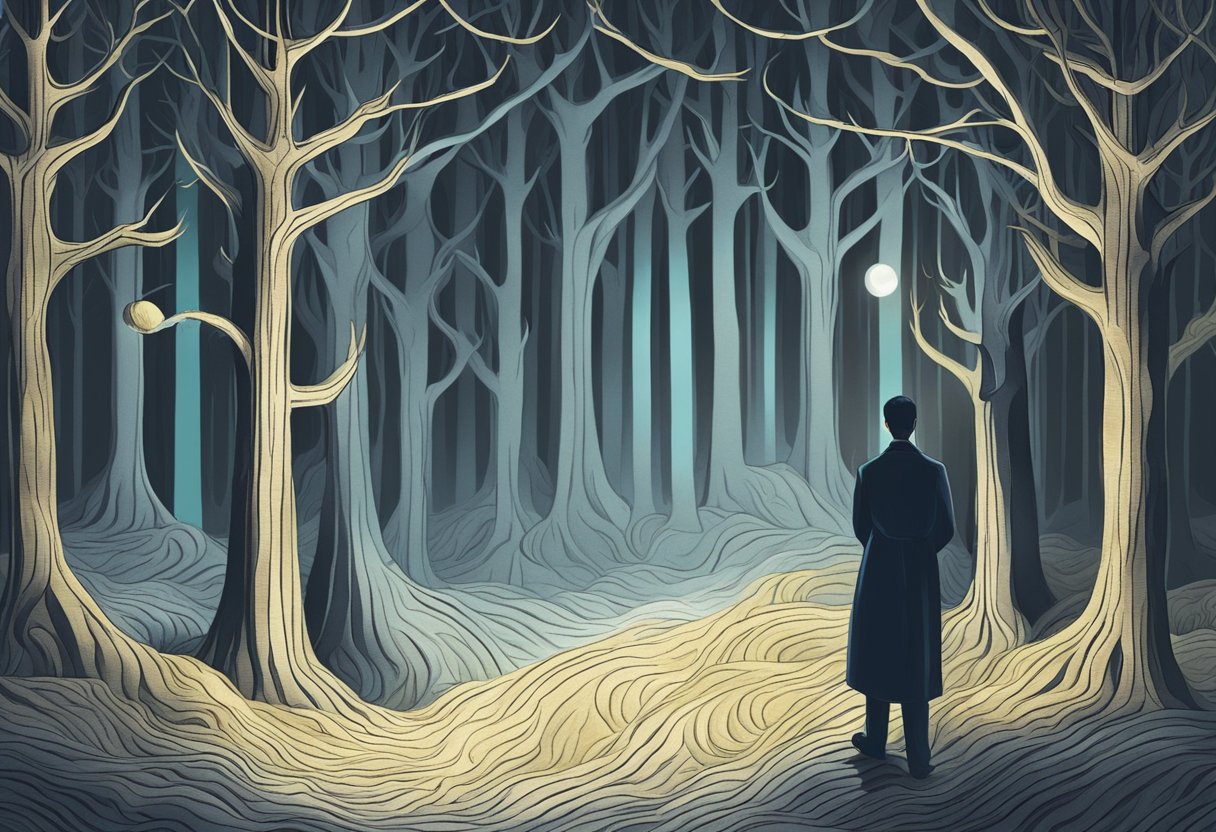
On the other hand, loss of control in lucid dreaming can also manifest as the appearance of shadow figures. These elusive figures might indicate that the dreamer is not fully comfortable within the dream world, with the shadowy figures serving as a reminder of their limitations.
Loss of control in lucid dreams can lead to feelings of powerlessness or insecurity, further reinforcing the negative emotions that the shadow figures represent.
To sum up, shadow figures in lucid dreams often embody the challenges and limitations dreamers face while trying to exert control over their dreams. These enigmatic beings serve as symbolic manifestations of the dreamer’s internal struggles, fears, and emotions. By confronting and learning from these shadowy figures, dreamers may gain valuable insights into themselves and enhance their ability to control their dreams.
Spirituality and shadow figures
In dreams, shadow figures often represent aspects of spirituality and the supernatural. They can appear as mysterious entities that may take on various shapes and forms. Sometimes, they may serve as messengers from the spiritual realm or represent our own spiritual selves.
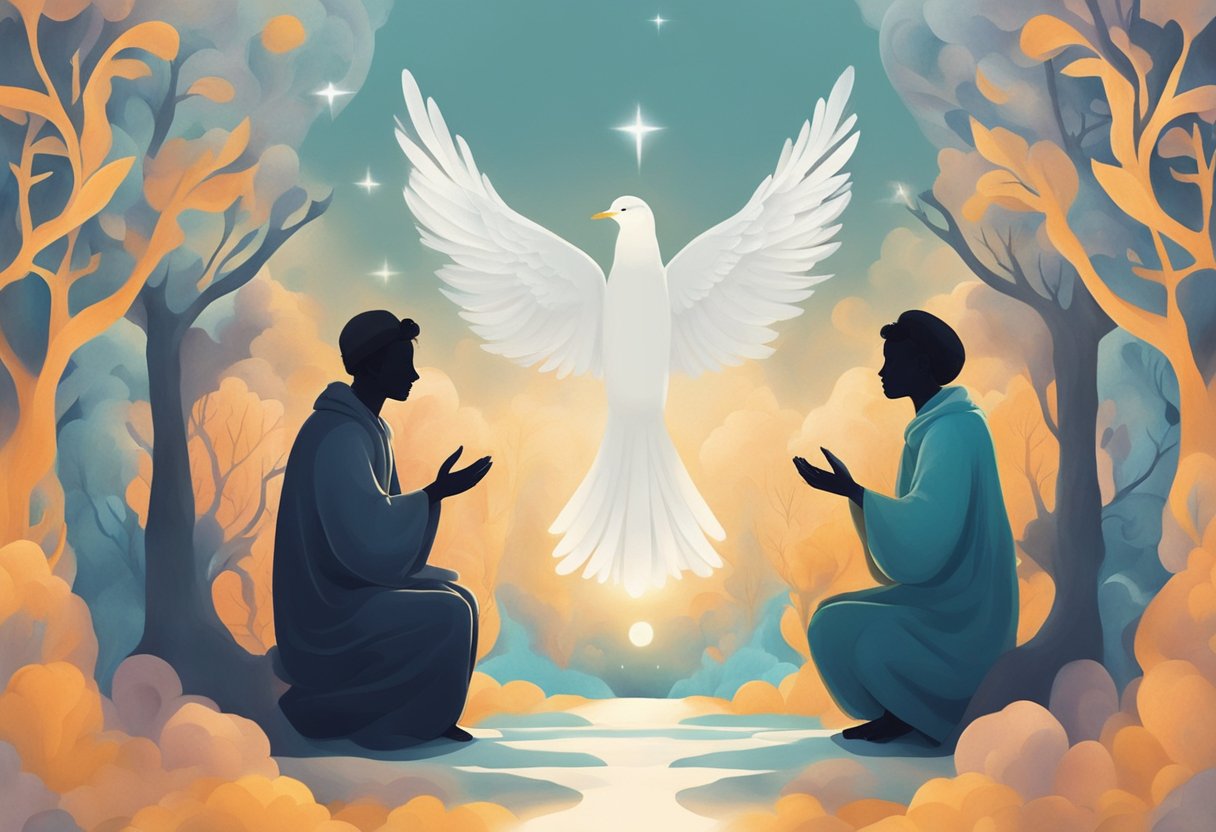
Shadow figures can be perceived as entities such as angels, ancestral spirits, or spirit guides. These supernatural beings are known to provide guidance, protection, and insight into our lives. Regardless of their nature, their symbolism may carry profound spiritual significance, captivating the attention of dreamers deeply.
These figures might also symbolize the darker aspects of our spiritual selves, such as unresolved emotions or suppressed desires. In this context, the shadow figure might emerge as a reflection of our own spiritual growth, urging us to confront and resolve these repressed emotions.
It is essential to approach shadow figures in dreams with an open mind, as every individual’s interpretation and associations may vary. By exploring the connections between these entities and one’s spirituality, dreamers can potentially achieve deeper understanding of themselves and their life experiences.
